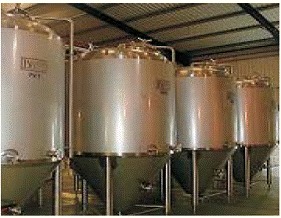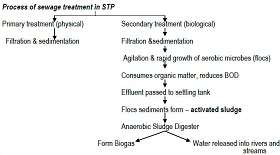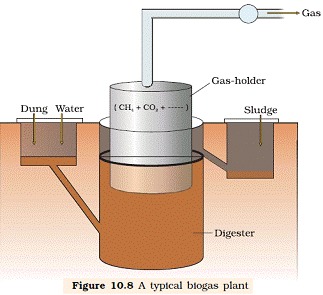
myCBSEguide App
Download the app to get CBSE Sample Papers 2023-24, NCERT Solutions (Revised), Most Important Questions, Previous Year Question Bank, Mock Tests, and Detailed Notes.
Install NowMicrobes in Human Welfare class 12 Notes Biology in PDF are available for free download in myCBSEguide mobile app. The best app for CBSE students now provides Microbes in Human Welfare class 12 Notes latest chapter wise notes for quick preparation of CBSE board exams and school-based annual examinations. Class 12 Biology notes on chapter 10 Microbes in Human Welfare are also available for download in CBSE Guide website.
Class 12 Biology notes Chapter 10 Microbes in Human Welfare
Download CBSE class 12th revision notes for chapter 10 Microbes in Human Welfare in PDF format for free. Download revision notes for Microbes in Human Welfare class 12 Notes and score high in exams. These are the Microbes in Human Welfare class 12 Notes prepared by team of expert teachers. The revision notes help you revise the whole chapter 10 in minutes. Revision notes in exam days is one of the best tips recommended by teachers during exam days.
Download Revision Notes as PDF
CBSE Class 12 Biology Revision Notes Chapter 10 Microbes in Human Welfare
Microbes are diverse-protozoa, bacteria, fungi and microscopic plants viruses, viroid and also prions that are proteinacious infectious agents. They are found everywhere on earth ranging from soil, air water and some inhabitable places.
Bacteria and fungi can be grown on nutritive media to form colonies, which can be seen by necked eyes and very useful in study of microorganisms.
Microbes cause many diseases in human beings, plants and animals. Several microorganisms are useful to man in diverse ways.
Microbes in household products
a. Microorganisms like Lactobacillus and other commonly called lactic acid bacteria (LAB) grow in milk and convert it to curd. The LAB produces acids that coagulate and partially digest the milk proteins. It also improves its nutritional quality by increasing vitamin B12. In our stomach too, the LAB play very beneficial role in checking disease-causing microbes.
b. The dough is used for making foods such as dosa and idli is fermented by bacteria. The puffed-up appearance of dough is due to the production of CO2 gas. The dough used for making bread is fermented using baker’s yeast (Saccharomyces cervisiae).
c. Cheese, is one of the oldest food items in which microbes were used. The large holes in ‘Swiss cheese’ are due to production of a large amount of CO2 by a bacterium named Propionibacterium sharmanii. The ‘Roquefort cheese’ is ripened by growing a specific fungus on them for a particular flavour.
Microbes in industrial production
A number of products like beverages and antibiotics involve uses of microbes. Production on large scale requires growing microbes in very large vessels called fermenters.
a. Fermented Beverages- Saccharomyces cerevisiae used for bread-making and commonly called brewer’s yeast, is used for fermenting malted cereals and fruit juices, to produce beverages like wine, bear, whisky and rum.. Wine and bear are produced without distillation whereas whisky, brandy and rum are produced by distillation of the fermented broth.

b. Antibiotics- they are chemical substances produced by some microbes and can kill or retard the growth of other microbes. Penicillin was first antibiotic to be discovered. Antibiotics have great improved our capacity to treat deadly diseases such as plague, whooping cough, diphtheria and leprosy.
c. Chemical, Organic acids , Enzymes and other Bioactive Molecules are commercially produced by microbes.
Chemicals :
- Aspergillus niger (fungus) – Citric acid
- Acetobacter aceti (bacterium) – Acetic acid
- Clostridium butylicum (bacterium) – Butyric acid
- Lactobacillus (bacterium) – Lactic acid
- Saccharomyces cerevisiae – Ethanol
Enzymes:
- Lipase – used in laundry detergents
- Pectinase and protease – used in bottled juices
- Streptokinase (Streptococcus bacterium) – used as clot buster (to remove clots)
Bioactive molecules:
- Cyclosporin A (Trichoderma polysporum fungi) – used as immunosuppressive agent (for organ transplant patients).
- Statins (Monascus purpureus yeast) – used as blood cholesterol lowering agents.
Microbes in Sewage Treatment
Municipal waste water (sewage) contains large amount of organic matter and microbes which are pathogenic and cannot be discharged into natural water bodies like rivers and streams.
Sewage is treated in sewage treatment plant to make it less polluting by using heterotrophic microbes naturally present in sewage. Sewage treatment is done in two stages-

In primary treatment, floating debris is removed by sequential filtration. Grit (soil and small pebbles) are removed by sedimentation.
Secondary treatment or biological treatment involves passing of primary effluents in large aeration tank to help the growth of aerobic microbes into flocs (masses of bacteria associated with fungal filaments to form mesh like structures). These microbes increase the consumption of organic wastes and decrease the BOD (biological oxygen demand)of the effluents.
BOD is the amount of oxygen that would be consumed if all the organic matter in one litre of water were oxidised by bacteria. It measures the amount of organic matter present in the water. Greater the BOD of water more it is polluted.
- Once the BOD of sewage or waste water is reduced, the effluent is then passed into a settling tank where the bacterial ‘flocs’ are allowed to sediment. This sediment is called activated sludge.
Sludge is passed into large tanks called anaerobic sludge digesters in which anaerobic bacteria digest the bacteria and fungi in the sludge and produce mixture of gas called biogas, which is a mixture of methane, hydrogen sulphide and carbon dioxide.
The effluents from the secondary treatment plant are released into water bodies.
Microbes in Production of Biogas
Biogas is a mixture of gases produced by the microbial activity that can be used as fuel. Certain bacteria that grows anaerobically on cellulosic material produce large amount of methane along with CO2and H2. These bacteria are collectively called methanogens (Methanobacterium).

Biogas Plant – the excreta of cattle (gobar) is rich in methanogens bacteria and is used for generation of biogas also called as gobar gas.
- The technology of biogas production was developed in India mainly due to the efforts of Indian Agricultural Research Institute (IARI) and Khadi and Village Industries Commission (KVIC).
Biogas plant consists of a concrete tank in which bio-wastes are collected and slurry of dung is fed.
A floating cover is placed over digester that moves upward when gas is produced. The gas produced is removed and supplied through an outlet pipe for consumption.
The spent slurry is removed through another outlet and used as fertilisers. Biogas plant is more often build in rural areas as large amount of cattle dug is available easily.
Microbes as Biocontrol agent
Biocontrol means use of biochemical method for controlling plant disease and pests. The chemical used as pesticides and insecticides are harmful to human beings and animals.
Biological control of pests and disease is a method of controlling pest on natural prediction rather than chemicals. The organic farmer creates a system where the pests are not eradicated but kept at manageable level by complex system of check and balance within the living and vibrant ecosystem. For example, the Ladybird and Dragonflies are used to get rid of aphids and mosquitoes respectively. On brassicas and fruit tree, to control butterfly caterpillars bacteria Bacillus thuringiensis is used.
Biological control developed for use in the treatment of plant disease is the fungus Trichoderma. Trichoderma are free-living fungi that are very common in the root systems that control several plant pathogens.
- Baculoviruses are pathogens that attack insects and other arthropods. The majority of baculoviruses used as biological control agents are in the genus Nucleopolyhedrovirus. These viruses are excellent candidates for species-specific, narrow spectrum insecticidal applications.
Microbes as Bio fertilisers
Bio fertilisers are organisms that enrich the nutrient quality of the soil. The main sources includes bacteria, fungi and cyanobacteria.
The root nodule formed by Rhizobium bacteria on root of leguminous plants increase the nitrogen level of soil, necessary for various metabolic processes. Azotobacter and Azospirillum are free living bacteria that live in soil and fix atmospheric nitrogen into organic forms.
Symbiotic association of fungi with angiosperm plants (mycorrhiza) also increase the fertility of soil. Glomus form mycorrhiza that absorbs phosphorus from the soil and passes it to the plant. These microbes also provide benefits like resistance to root-borne pathogens, tolerance to salinity and drought.
Cyanobacteria (Nostoc, Anabaena), an autotrophic microbes found in aquatic and terrestrial environment fix atmospheric nitrogen. In paddy field this acts as important bio-fertiliser. Blue green algae also add organic matter to the soil and increase its fertility.
CBSE Class 12 Revision Notes and Key Points
Microbes in Human Welfare class 12 Notes Biology. CBSE quick revision note for class-12 Chemistry Physics Math’s, Biology and other subject are very helpful to revise the whole syllabus during exam days. The revision notes covers all important formulas and concepts given in the chapter. Even if you wish to have an overview of a chapter, quick revision notes are here to do if for you. These notes will certainly save your time during stressful exam days.
- Physics
- Chemistry
- Mathematics
- Biology
- Accountancy
- Economics
- Business Studies
- Computer Science
- Informatics Practices
- English Core
- History
- Physical Education
To download Microbes in Human Welfare class 12 Notes Biology, sample paper for class 12 Physics, Chemistry, Biology, History, Political Science, Economics, Geography, Computer Science, Home Science, Accountancy, Business Studies, and Home Science; do check myCBSEguide app or website. myCBSEguide provides sample papers with solution, test papers for chapter-wise practice, NCERT Microbes in Human Welfare, NCERT Exemplar Microbes in Human Welfare, quick revision notes for ready reference, CBSE guess papers and CBSE important question papers. Sample Paper all are made available through the best app for CBSE students and myCBSEguide website.
- Reproduction in Organisms class 12 Notes Biology
- Sexual Reproduction in Flowering Plants class 12 Notes Biology
- Human Reproduction class 12 Notes Biology
- Reproductive Health class 12 Notes Biology
- Principles of Inheritance and Variation class 12 Notes Biology
- Molecular Basis of Inheritance class 12 Notes Biology
- Evolution class 12 Notes Biology
- Human Health and Disease class 12 Notes Biology
- Strategies for Enhancement in Food Production class 12 Notes Biology
- Biotechnology Principles and Processes class 12 Notes Biology
- Biotechnology and its Applications class 12 Notes Biology
- Organisms and Populations class 12 Notes Biology
- Ecosystem class 12 Notes Biology
- Biodiversity and Conservation class 12 Notes Biology
- Environmental Issues class 12 Notes Biology

Test Generator
Create question paper PDF and online tests with your own name & logo in minutes.
Create Now
myCBSEguide
Question Bank, Mock Tests, Exam Papers, NCERT Solutions, Sample Papers, Notes
Install Now